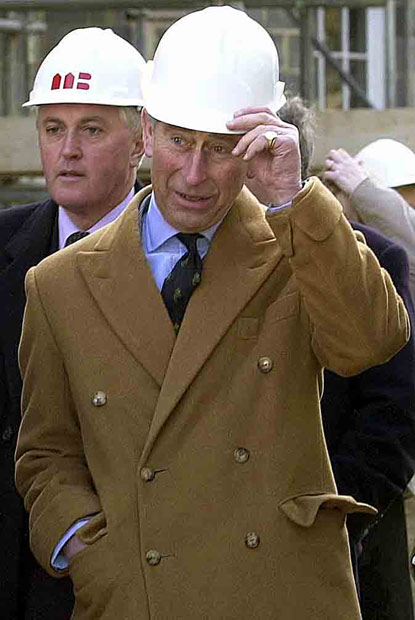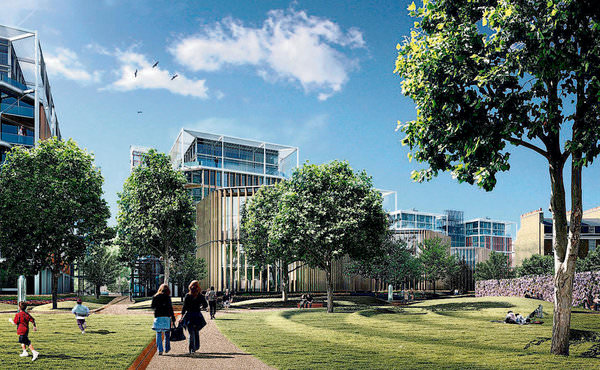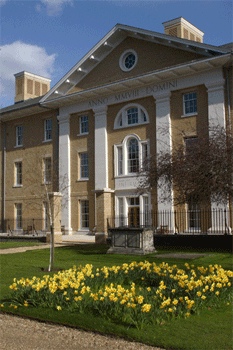Like Mount Vesuvius but at briefer intervals, Prince Charles erupts in high dudgeon over various and sundry affronts to his very particular and sometimes very peculiar notions of how life should be lived. The ghastliness of modern architecture and the superiority of homeopathic medicine—in 2004 he endorsed an alternative cancer treatment that prescribes, among other things, daily coffee enemas—are but the foremost of his many contrarian beliefs. Perhaps because mental illness runs in both sides of his highly inbred family, his state of mind has been questioned more than once.
Still, the latest urban planning flap stirred up by Charles—who at age 61 has been heir to the British throne longer than any of his predecessors—may raise the most serious questions yet about his fitness to reign. In a high-court case heard in London earlier this year, the developer CPC Group asserted that Qatar Diar, the real-estate investment arm of the Qatari royal family (which has been paying dearly for British trophy properties, including Harrods and the US Embassy site on London’s Grosvenor Square) had acted improperly by reneging on its commitment to finance a £3 billion ($4.6 billion) redevelopment plan by Richard Rogers. The modernist mixed-use complex was to include apartments, a hotel, and a restaurant on a 12.8–acre plot on the grounds of Chelsea’s Royal Hospital, the army convalescent and retirement home built by Christopher Wren and expanded by John Soane.
CPC Group, which sought £81 million ($125 million) in damages from Qatar Diar, won the case in June after emails sent internally by the prince’s staff showed that Charles had secretly pressured the emir of Qatar to drop Rogers during a teatime meeting at Clarence House, the prince’s London residence. In an earlier letter leaked by unknown sources and subsequently called into evidence during the trial, Charles wrote to the emir that “quite frankly my heart sank” upon seeing Rogers’s design and asked the Qatari ruler to “reconsider” his patronage.
Although the Qatari royal family complied, apparently fearing a snub from the future king, the presiding judge took pains to point out that Charles’s “intervention was, no doubt, unexpected and unwelcome.” The Qatari government did not comment on the ruling.
Computer renderings of Rogers’s design at street level indicate that it was far from the caliber of his finest work—his high-tech Lloyds headquarters of 1978–1986 in London, an infernal money machine that perfectly captured the spirit of Margaret Thatcher’s deregulatory “Big Bang” in the year of its completion. But neither would it have been terribly offensive. It showed the architect trying to fit into the local redbrick context with more care than usual—by keeping the scale smaller than his customary high-rises and cladding the Chelsea structures in warmer-looking materials—with a result that brings to mind the commercial work of Rogers’ former partner, Renzo Piano, on a rather slow day.
In place of Rogers’s ensemble, Charles had suggested a neoclassical pastiche by Quinlan Terry, his favorite living architect. Terry, who designed the soporific, sub-Palladian exterior of the Margaret Thatcher Infirmary at the Royal Hospital dedicated by the prince last year, if anything makes Charles seem like a moderate on architectural and social issues. (In an extraordinary interview Terry gave me two decades ago, he reiterated his certainty that God handed down the Five Orders of Classical Architecture to Moses on Mt. Sinai along with the Ten Commandments, and expressed fears that the Church of England will be hijacked by black lesbian bishops.*)
Charles emerged as Britain’s most conspicuous promoter of neo-conservative architectural attitudes with his headline-making 1984 speech to the Royal Institute of British Architects in which he denounced plans for a modernist addition to London’s National Gallery as “a monstrous carbuncle on the face of a much–loved and elegant friend.” That project’s luckless designers—the London firm of Ahrends, Burton and Koralek—lost the job thanks to Charles, whose tirade led to a new competition won by Robert Venturi and Denise Scott Brown, and which resulted in their Sainsbury Wing of 1986–1991, a sly, pop-mannerist jeu d’esprit that was surely not the copybook classical simulacrum Charles had envisioned.
Among the British architects who spoke out against Charles at the time was Rogers, who contributed an impassioned foreword to Maxwell Hutchinson’s polemical counterattack The Prince of Wales: Right or Wrong? It can be safely assumed that Charles’s pivotal part in killing Rogers’s Chelsea commission was in no small measure payback for the architect’s earlier lèse-majesté.
Anthony Lester, a government adviser on constitutional reform, told The Guardian that “It is not the constitutional function of members of the royal family to seek to take advantage of their public position to influence planning or other decisions affecting private rights and the public interest.” Undeterred and unapologetic, Charles’s assertive private secretary, Michael Peat, reacted to the court decision with the laughable assertion that his employer must “make sure the views of ordinary people who might not otherwise be heard receive some exposure,” as if ordinary people had ever had any say in the matter.
Advertisement
The Guardian responded to this twaddle with due skepticism. It reported that at least one tenant in Charles’s Duchy of Cornwall—vast landholdings in southwest England that have traditionally belonged to the Prince of Wales—begged to differ with Peat’s characterization of his boss:
“It is frustrating to hear [Charles] thinks he is on the side of ordinary people against developers, because villagers and the parish council here have sent him dozens of letters [of protest] over the past few years,” said Jane Giddens, parish councilwoman of Newton St. Loe, a duchy-owned village near Bath, where the duchy has been planning 2,000 new homes on neighbouring fields. “…. No one can understand why he has not been listening.”
No one knows the answer to that question better than Charles’s long-suffering if loyal aides, one of whom last year told The Daily Mail—long the London paper most sympathetic to the royal family—that “Prince Charles’s heart is in the right place, but he is not of the real world.”
* Martin Filler, “A Mighty Fortress: Quinlan Terry and the Reformation of Architecture,” Assemblage, June 1989, pp. 119-128.





